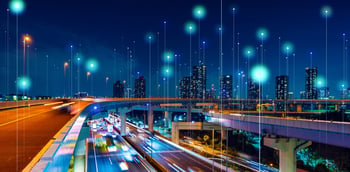 The transportation and logistics industry is undergoing a significant transformation driven by digital technologies. 74% of supply chain leaders are increasing their supply chain technology and innovation investments according to a 2023 MHI Annual Industry Report. From optimizing supply chains to improving customer experiences, digital transformation has become a crucial factor for success in this sector. Let's explore five key trends that are shaping the future of transportation and logistics through digital transformation.
The transportation and logistics industry is undergoing a significant transformation driven by digital technologies. 74% of supply chain leaders are increasing their supply chain technology and innovation investments according to a 2023 MHI Annual Industry Report. From optimizing supply chains to improving customer experiences, digital transformation has become a crucial factor for success in this sector. Let's explore five key trends that are shaping the future of transportation and logistics through digital transformation.
1. Internet of Things (IoT) and Real-Time Tracking
The Internet of Things (IoT) has revolutionized the way transportation and logistics companies operate. IoT devices and sensors are now embedded in vehicles, cargo, and infrastructure, providing real-time data on everything from vehicle location and condition to temperature and humidity levels inside cargo containers. This real-time tracking capability enhances visibility, reduces operational risks, and enables better decision-making.
For instance, GPS tracking and RFID technology allow logistics companies to monitor the location of shipments accurately, helping them optimize routes and delivery schedules. Additionally, sensors can provide insights into the condition of perishable goods during transit, ensuring that temperature-sensitive products reach their destination in perfect condition.
2. Artificial Intelligence (AI) and Machine Learning
Artificial intelligence and machine learning are driving efficiency and automation in transportation and logistics. AI-powered algorithms can analyze vast amounts of data to predict demand, optimize routes, and even predict maintenance needs for vehicles. Machine learning models can improve demand forecasting, helping companies manage inventory more effectively and reduce waste.
Furthermore, AI-driven chatbots and virtual assistants are enhancing customer service by providing real-time updates on shipments and handling customer inquiries. AI-driven predictive analytics help companies identify potential issues before they become critical, reducing downtime and operational disruptions.
3. Blockchain for Supply Chain Transparency
Blockchain technology is gaining traction in the transportation and logistics industry for its ability to enhance transparency and security throughout the supply chain. Blockchain creates an immutable ledger of all transactions, providing a tamper-proof record of every step in the logistics process.
This technology is particularly beneficial for verifying the authenticity of goods, tracking the origin of products, and ensuring compliance with regulations and standards. Smart contracts are contracts in which the terms of the agreement are encoded directly into the system, enabling them to execute automatically without the need for manual intervention., can automate payment processing and reduce disputes between stakeholders.
4. Autonomous Vehicles and Drones
The development of autonomous vehicles and drones is set to revolutionize transportation and logistics further. Self-driving trucks and delivery vehicles promise to increase efficiency and reduce labor costs in the long haul and last-mile delivery segments. These vehicles rely on a combination of sensors, AI, and advanced mapping technology to navigate safely and efficiently.
Drones, on the other hand, are being used for quick and efficient deliveries in areas with challenging terrain or during emergencies. They can also be employed for surveillance and monitoring purposes, such as inspecting infrastructure and tracking inventory in large warehouses.
5. Sustainability and Green Logistics
Sustainability is a growing concern in transportation and logistics, and digital transformation is playing a pivotal role in enabling green practices. Companies are leveraging data analytics to optimize routes, reduce fuel consumption, and minimize emissions. Electric and hybrid vehicles are becoming more common, thanks to advancements in battery technology and charging infrastructure.
Furthermore, digital platforms and marketplaces are facilitating the sharing of transportation resources, allowing companies to collaborate and reduce empty truck miles. This not only lowers costs but also helps reduce the carbon footprint of transportation operations.
Final Takeaways
Digital transformation is reshaping the transportation and logistics industry in profound ways. IoT, AI, blockchain, autonomous vehicles, and sustainability initiatives are just a few of the key trends that are driving innovation and efficiency in this sector. As transportation and logistics companies continue to invest in digital technologies, we can expect even more exciting developments in the years to come, leading to a more connected, efficient, and sustainable future for the industry.


